The Kalmykia Republic - Overview
The Republic of Kalmykia is a federal subject of Russia located in the very south-east of the European part of the country, part of the Southern Federal District. Elista is the capital city of the region.
The population of Kalmykia is about 268,000 (2022), the area - 74,731 sq. km.
History of Kalmykia
In ancient times, the territory of Kalmykia was inhabited by representatives of many tribes and nations (Cimmerians, Scythians, Sarmatians, Huns, Pechenegs, Polovtsy). This area was the center of one of the earliest state formations in Eastern Europe - Khazaria, which had a profound influence on the history of Europe and Asia.
In the 13th century, this territory came under the control of the Golden Horde. After the collapse of the Golden Horde, Nogai tribes roamed here. The ancestors of the Kalmyks were western Mongols (Oirat), who came from Dzungaria. In 1608-1609, they first took the oath of allegiance to the Russian tsar. From the middle of the 17th century, they began to populate the area between the Don and the Volga rivers and founded the Kalmyk Khanate.
The Kalmyk Khanate achieved its greatest power during the reign of Ayuka Khan (1669-1724). Ayuka Khan firmly defended the southern borders of Russia, fought against the Crimean and Kuban Tatars, Kazakhs, mountaineers of the North Caucasus.
During the reign of Khan Donduk-Dashi (1741-1761), the Russian imperial government began a policy of limiting the Khan’s power, Russian landowners and peasants began the colonization of Kalmyk land. Under these conditions, the idea of returning to the historical homeland (Dzungaria) spread among the Kalmyks. At that time, Dzungaria was under the rule of the Manchu Qing Dynasty.
January 5, 1771, the Kalmyks who lived along the left bank of the Volga began their journey to Central Asia. This migration became a national tragedy. More than 100,000 Kalmyks died in battles, from wounds, cold, hunger, diseases, etc. In October 1771, Catherine II abolished the Kalmyk Khanate.
More historical facts…
The Kalmyks who remained in Russia continued to participate in the country’s wars against external enemies. They retained their Lamaist Buddhist religion and their semi-nomadic life. The word “kalmyk” in Turkish means “remnant” referring to those who stayed behind.
In 1920, the Kalmyk Autonomous Region was proclaimed. As a result of the Civil War, the Kalmyk nation was split. Don Kalmyks, who participated in the White movement, emigrated to Yugoslavia, Bulgaria, France and other countries. In 1935, the Kalmyk Autonomous Region was reorganized into the Kalmyk Autonomous Soviet Socialist Republic.
During the Second World War, in the summer of 1942, a significant part of Kalmykia was occupied by German troops. By January 1943, the Soviet army liberated the territory of the republic. In December 1943, the Kalmyks were deported to Siberia. It was a punishment for mass resistance to Soviet authorities and the fight against the Red Army.
The deportation became a national catastrophe. About 98,000 Kalmyks were deported and more than 40,000 died in exile in 1943-1950. The deportation of the Kalmyk people automatically led to the elimination of national autonomy. In 1944, the Kalmyk Autonomous Soviet Socialist Republic ceased to exist. In 1956, the Kalmyks were rehabilitated. Kalmyk autonomy was restored in 1958 but not in its former borders.
In the early 1990s, the Kalmyks sought independence but abandoned their separatist intentions in 1994. February 20, 1992, the Supreme Soviet of the Kalmyk SSR adopted a resolution on renaming of the region to the Republic of Kalmykia. In 1993, the first President of Kalmykia was elected. In 2009, the 400th anniversary of voluntary entering of Kalmyk people into the Russian state was celebrated.
Landscapes of the Kalmykia Republic

Kalmykia scenery
Author: Dvornikov Mikhail
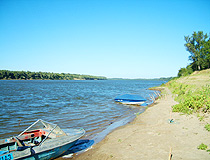
River in Kalmykia
Author: Stanislav Tikhonov

Sunset in Kalmykia
Author: Moskaluk Vitaly
Kalmykia - Features
The region is located in the zones of steppes, semi-deserts and deserts. The length of the territory from north to south - 458 km, from west to east - 423 km.
The climate is continental. Summers are hot and very dry, winters are with little snow, sometimes very cold. The average January temperatures range from -7 to -12 degrees Celsius, the average July temperature are +23-26 degrees Celsius.
Kalmykia has the hottest summers in Russia, along with the Volgograd region. July 12, 2010, air warmed up to +45,4 degrees Celsius in the village of Utta - this is a record for the air temperature in Russia. The annual precipitation is 210-340 mm.
According to the 2010 census, the national composition of the population is the following: Kalmyks (57.4%), Russians (32.2%), Dargins (2.7%), Kazakhs (1.7%). The largest population center is the capital of the Republic of Kalmykia - Elista, which is home to over a third of the population of the region (104,400). In addition to Elista, there are only two more towns in the republic (Gorodovikovsk and Lagan), each with a population of about 10,000 people.
The economic potential of Kalmykia is underdeveloped. The most important part of the economy of the republic is its agro-industrial complex. The basis of the agricultural sector of Kalmykia is livestock (beef cattle, meat and fine-wooled sheep breeding). Due to the prevalence of zones of strong winds, the republic has significant wind energy resources.
Attractions of Kalmykia
Today, the culture of the Kalmykia Republic is connected primarily with the culture of the Kalmyk people - the only people in Europe who traditionally profess Buddhism.
Rich cultural and historical heritage of the region is represented by numerous archaeological sites. There are a lot of burial mounds made by various nomadic peoples. In general, there are more than 230 historical and cultural monuments, about 200,000 archaeological sites on the territory of Kalmykia.
The main attraction of Kalmykia is the city of Elista. The capital of the region impresses with its unusual Buddhist flavor and amazing buildings, among which the Golden Abode of Buddha Shakyamuni stands out (the largest Buddhist temple in Europe).
The main natural attraction is Bolshoye Yashaltinskoe Lake - a large salt lake located in Yashaltinsky district, between the villages of Berezovskoye and Solyonoye. The area of the lake is about 40 square kilometers. It has a unique balneological potential.


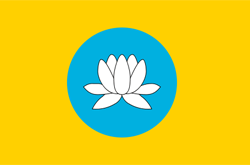
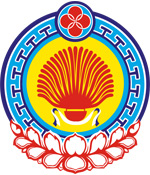
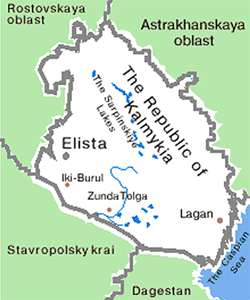



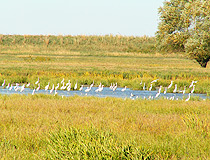

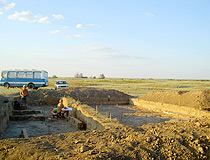
The comments of our visitors